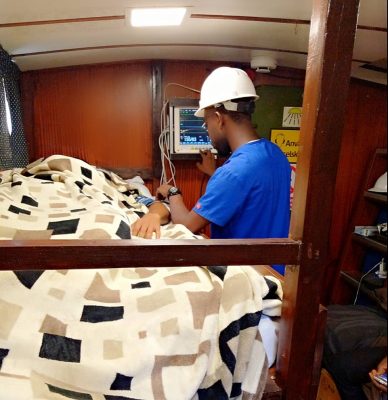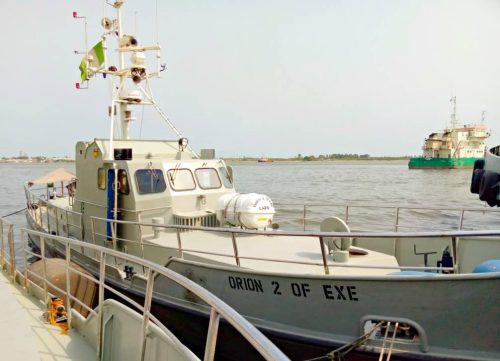
The Nigerian Maritime Administration and Safety Agency (NIMASA) has approved Adeiza Medical Clinic to operate a boat ambulance service to provide medical assistance at sea for seafarers and evacuation of sick crews within Nigeria’s maritime domain.
Disclosing this in a chat with SHIPS & PORTS, Medical Director, Adeiza Clinic, Dr. Ukoh Ubaka, said the firm runs a 24 hours service to provide medical assistance including a standby medical emergency services at oil operations fields and ship-to-ship transfer operations (STS) area.
Dr. Ubaka said the boat ambulance acquired by the clinic is fitted with medical equipment including oxygen and suctioning machine that can keep a sick person safe for as long as 24 hours.
He said, “Our basic aim is to save lives at sea and that is the essence of this development. NIMASA has given us approval to operate this boat and this is the first of its kind in the whole of sub-Saharan Africa. We have three permanent crews on board – the captain, chief engineer and able body seaman – and in case of emergency; we have a doctor and nurse on board to assist to rescue the sick or injured person.

“We have been into this business of rescuing seafarers for over 10 years and now we decided to acquire an ambulance. Therein, we have patient monitor, oxygen and suctioning machine, heart starter, and three patients’ beds apart from the captain’s bed. The boat has all the communication gadgets such as AIS, and two VHF for short and long range. We cruise at 20 nautical miles per hour, so our boat is a fast one for rescue and it is very stable when patients are onboard.
“We have a very high hope that we are going to use this ambulance to save a lot of seafarers who may fall sick or have accidents on board ships. We hope the maritime industry will take advantage of this modern ambulance that we have brought to Nigeria and get themselves the best of medical care at sea. We treat at sea when the need arises but basically the ambulance is meant for evacuation and we are equally looking at where we have large movement of ships such as around refineries, ship-to-ship transhipment areas and at the rig. We are looking forward to work with them.”